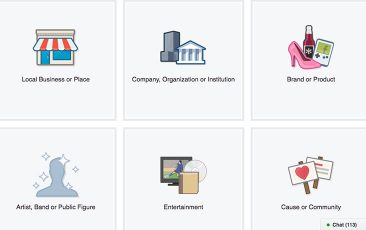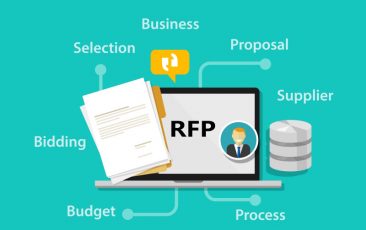
A few months ago I was supposed to talk to the local chapter of the Association of Fundraising Professionals. Unfortunately, they had to cancel. Not one to waste good research hours I've decided to turn my presentation into a blog post. For background, The Association of Fundraising Professionals is a group dedicated to helping individuals responsible for generating philanthropic support for non-profits and charitable organizations.
As part of my research I talked to over a dozen people that fit the audience for AFP. I asked them:
- What is the #1 thing nonprofits struggle with when it comes to marketing?
- Are there business problems, in general, that marketing might be able to assist with?
- All aspects of online marketing are open for discussion; websites, social media, paying for ads, email marketing, etc.
- If you were at the presentation, what would you want me to talk about?
The overwhelming response was, a lack of confidence in their marketing strategy. I am betting that a lot of business owners would also fit into that category. Many non-profits operate with a small crew that does not include someone with an advertising or sales background, so the lack of confidence makes sense. Plus, things have changed drastically in the last 10 years regarding how you can communicate with an audience.
Knowing how to leverage the tools available, and back it up with some processes that converts people that are interested in your cause into supporting members is key.
I could summarize the discussions I have with the following:
No time, no money, no knowledge
For instance, some of the answers I got back are as follows:
Executive Director #1 - We are not quite tech-savvy enough. Linking posts between Facebook, Twitter, Instagram… which I would love to know how to do. Also, what do websites really have to have in order to be in compliance? Also, is boosting posts worth it?
Executive Director #2 - I think that from what I have seen, a lot of non-profits are very small, often with limited staff. As such, they usually don't have anyone who is an employee on-site who has enough of an understanding of digital marketing. I think some of them (and same goes for a lot of the small businesses I talk to) are overwhelmed by what is for them a new concept.
Executive Director #3 - Management of disciplined, compelling messaging. Our challenge is that not only do you need to be an expert in whatever field your are working, but you also have to be an expert in digital marketing in order to grow.
But I also think Executive Director #3 (ED3) hit it out of the park when he said:
“Nonprofits have to have a highly-compelling and disciplined message in order to raise money for their impact.”
So how do you, as the Executive Director, or Director of Marketing for a non-profit, address this?
First, let’s build some common vocabulary.
Types of Advertising
There are two types of advertising:
The first is Brand Awareness advertising. This is your typical Super Bowl commercial or full page ad in NY Time kind of exposure. It is something big brands can afford to do as they have huge marketing budgets. They are generally just trying to stay top of mind so that when a consumer is making a purchase decision their brand is the one the consumer chooses.
The second kind of advertising is Direct Response. This type of advertising causes a person to directly respond. It might be something as simple as giving you their email address, or responding to a time limited offer. But it is something that compels them to take action.
So now that that is out of the way.
Stories tell about your impact
The most important thing a non-profit can focus on is creating compelling stories that share their message with their audience. This is above all else. Without a compelling story no one is buying.
The method by which you communicate this needs to be varied. You can do this through video, blog posts, social media updates, etc. In general, this is your Brand Awareness based advertising. It keeps your name and mission in front of people.
The way to flip Brand Awareness to Direct Response is, if you are telling a story, ask for a donation (or something) to solve the problem you outline in the story.
Don’t forget to ask for the donation! So many times we see non-profits putting really well meaning stories out there for their audience, but do not draw a line between the issue you are trying to solve and the viewer/reader taking action.
The Communication Pyramid
More vocabulary, sorry.
Front of Line is everything that happens prior to opt-in (I'll explain opt-ins in a sec). It is the traffic generated by social media, ads, etc. Hopefully, you are sending all of that traffic back to the site as a way of increasing the odds they will read more about your organization and (in the very least) opt-in to be contacted by you in the future.
Lead Magnets are what you use to get someone to opt-in. They can be anything, an e-book, a t-shirt or sticker, even your monthly email newsletter is a Lead Magnet (not a very good one though). The action of subscribing is an example of what we call a Conversion.
Behind the Line is all of the efforts that happen after you get them to opt-in. As an organization you may be trying to get them to volunteer, give, tell others, etc.
The reason why we mention all of this is because:
Email is still king of the communication pyramid
In general, email newsletters will not cut it anymore. They are the lowest form of communicating with your audience. Yes, you should probably still be doing one. But they should not be your stopping point. The problem with the Monthly Email Newsletter is that they are all about your organization and not enough about those you are trying to reach.
Drip Email Marketing Campaigns and Marketing Automation Sequences are extremely powerful tools that, when harnessed, can increase engagement with your audience. Drip Marketing for a non-profit could be as simple as putting together a 6-8 email campaign that tells the story and impact that your organization has had. Once someone subscribes to receive communication from you, you send them these emails one a week. After 8 weeks, if you have crafted the right story, they should know why it is important that they pay attention to your organization and get involved. Also, in the 4th and 8th emails, you ask them for something. It can be as simple as additional information about who they are. Or it can be as big as a donation to your organization.
The difference between Drip Email Marketing and Marketing Automation is that Drip Marketing sends a set sequence of emails. You start at 1 and go to x (just like in math, x can be any number of emails). The delay between emails can be different but the path is always the same. Marketing Automation Sequences allow you to get more complex. You can change the recipient’s path through a funnel based on actions (or non-action) that the email recipient takes. Send an email with a link in it? Did they click it? Do x. If they did not click it then do y. Marketing Automation is extremely powerful, but also takes longer to set up. Mostly because, writing all of the various emails for the sequences is time consuming. But the reason they are so powerful is because the email recipient is basically self selecting into a more focused form of communication.
The example I would give is a church. Most churches send out some sort of Monthly Email Newsletter. It has All. Of. The. Information. Most churches could easily adopt a Drip Email campaign. They could use it to communicate with people that have signed up as a visitor. Send them 6-8 emails telling about the history of the church, the programs that you offer, what the vision is, and then hit them up by asking them to attend the new members class. An example of an Automation Sequence would be starting to send them this drip campaign but ask them in an email if they have kids and if so what age. This would add a tag in the email system to send them information about kids ministry. Perhaps they also get asked where they would like to serve. Give them 3-4 options. If they select worship team then they would get email updates about the kids ministry and worship team. Etc.
When people are regularly getting the information they want and need, they feel like the organization is taking the time to give them what they need. This causes them to become more engaged.
Facebook, otherwise known as how we communicate on the interwebs
Mobile, our home city, is a Facebook town. If you are a non-profit in the Mobile Alabama area you can almost get away with just standardizing all of our social media communication on Facebook. Caveat: It’s important to know who your audience is and where they hang out. It might be Facebook. It might be Twitter. It might not be online at all!
But back to Facebook… Facebook should be used to generate traffic back to your website. Do not be afraid to Boost posts or invest in paid advertising on Facebook. It is relatively inexpensive to do. You can pick your target demographic with great accuracy which yields greater results.
The reason for investing in Facebook is so that you can get traffic to your site. It is the Front of Line effort that we mentioned before. Facebook is a way for you to generate an audience and point it towards your site. Then you use lead magnets and other giveaways to entice folks to give you their contact information. This enables you to mature your relationship with them via email, cultivating them into members.
Strategy in a box
So if you were in agreement with our three Executive Directors at the beginning of this article, here is your strategy:
- Have a good website. Make sure it has the proper offers, opt in forms, etc
- Create a Facebook page
- Create content on the website that is compelling and tells your story
- Post a link to that content on Facebook
- Repeat ad infinitum
- Create a drip campaign for your members (6-8 emails)
- Create a drip campaign for contacts that are not members (6-8 emails)
If you were to just do this, then you have a more mature advertising and marketing process then 90% of all businesses and non-profits. This process will help you even out the ebb-and-flow of your business. It will also increase membership and volunteerism. So get started.
Here a a few additional resources for you:
- Google Analytics tells you how many people have visited your site, where they came from, and what they were looking at.
- MailChimp is the best monthly email newsletter service provider and has some basic drip campaign capabilities
- Drip is our choice for best bang for the buck when it comes to drip and marketing automation



